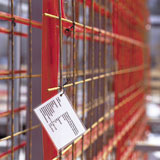Concrete Core Tempering – CCT
Concrete core tempering is a comfortable and environmentally friendly way of providing background temperature control in buildings.
CCT assists in providing comfortable temperatures through the use of natural heat buffers in structural components of modern buildings.
The principle of the concrete core tempering (CCT) is based on the use of natural heat buffers of building components. CCT supports the high thermal mass of concrete sections by heating them or cooling them using water flowing through pipes embedded in the building structure. CCT has become a hot topic in air conditioning due to its underlying economic merits.
The advantages of CCT, as a background complementary heating and cooling system, are:- low investment and operating costs
- "gentle cooling" without need for flues
- reduced air exchange in combination with ventilation systems
- no Sick Building Syndrome issues
- low and affordable flow temperature level
- provides a good match with Interseasonal Heat Transfer
Thermal Mass
Concrete Core Tempering takes advantage of the thermal mass of a building to stabalise temperatures within it. The thermal inertia of the building can be used to purge a building of heat on summer nights to reduce the need for cooling during the following day.
By activating the thermal mass of the building it is possible not only to arrange a direct heating-cooling effect, but also to reduce the peak load and transfer some of the load to the time when the building is not occupied.
Because these systems operate at water temperatures close to room temperature, they increase the efficiency of heat pumps, ground heat exchangers and other systems using renewable energy sources like Interseasonal Heat Tranfer.
By separating part of the temperature control from the ventilation system it is possible to arrange a more effective air handling system that can focus on changing air for air quality reasons, rather than compromising between air temperature and air quality.
The principles are similar to those used by TermoDeck where the concrete structure of the building is used to circulate warm air in winter – or cool air in summer – into the building through air passages within concrete ceilings.
See also: Renewable Heat
See also: Renewable Cooling
See also: Banking on IHT



